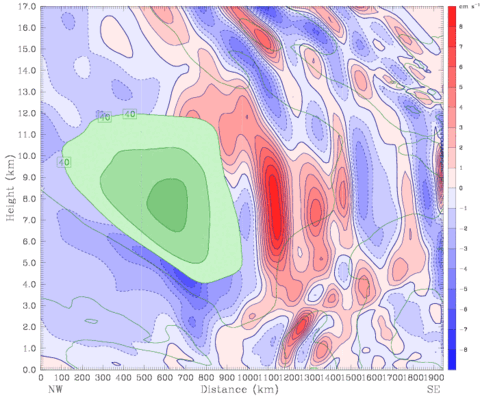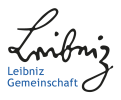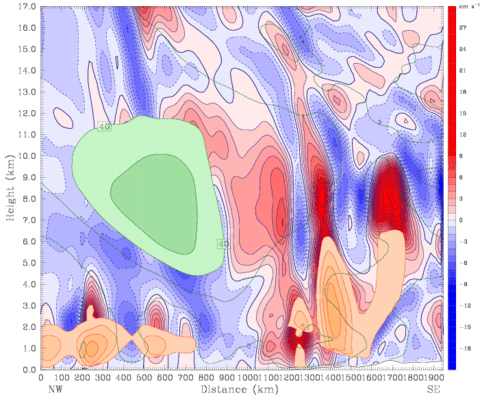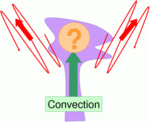PIGW - Precipitation and Inertia-Gravity Waves
Summary
The propagation of subtropical wet and warm air masses over the North Atlantic into the European region defines a grosswetterlage with intensive precipitation. The areas of precipitation, their intensity, time and duration are mainly determined by the nonlinear dynamics at planetary, synoptic and sub-synoptic (meso-) scales. The impact of these complex processes on precipitation events is not understood yet and will be studied in this project. The focus is on planetary poleward Rossby waves breaking events, because in this type of baroclinic lifecycles mesoscale low-frequency gravity waves, so-called inertia-gravity waves, are generated downstream of the jet streak. These waves may propagate from the upper troposphere down to the boundary layer. In potentially unstable situations these inertia-gravity waves may induce updrafts and subsequent deep convection leading to heavy precipitation events. For three selected cases high resolution model simulations should be performed to carry out process studies with explicit convection. The model results will be validated with observations and the problem of predictability will be examined.

Organisation
- Principle investigator: Dieter H.W. Peters
- Contributors: Christoph Zülicke
- Runtime: 01 Apr 2005 - 30 Mar 2008
- Funding: DFG www.dfg.de contract PE 474/4-1/2
- Associated to the DFG-SFB 1167 "Quantitativ Precipitation Forecast" < http://www.meteo.uni-bonn.de/projekte/SPPMeteo/spp1167.html >
Activities
- Use of four selected LEWIZ campaigns for representative case studies (LEWIZ-K1, LEWIZ-K2, LEWIZ-K4, LEWIZ-K10)
- Run of MM5 model with ultra-high resolution (this is four nested domains with 27 / 9 / 3 / 1 km horizontal resolution)
- Acquisition of various datasets for the documentation of the impact of inertia-gravity waves on weather phenomena (for LEWIZ-K1) such as MESAN (SMHI Norrkoeping), MI and PI (DWD Offenbach), ELDAS (U Vienna), BALTRAD (GKSS Geesthacht, SMHI Norrkoeping), GASP (GFZ Potsdam)... acknowledge the support from DFG-SFB 1167 QPF
Results
- Signatures of jet-generated inertia-gravity waves are found in patterns for surface wind, clouds and precipitation from radars, rain gauges and satellites. Thuis underlines that such waves have an ipact on the weather and operationally assimilated datasets such as MESAN and BALTRAD properly reflect these features (Zülicke & Peters, 2007 Impact...)
- A receipt is developed how to set up a model diffusion and adjustment for a proper simulation of inertia-gravity waves. It takes into account that vertical diffusion limits shallow (sub-inertial) waves and horizontal diffusion steep (gravity) waves. (Zülicke & Peters, 2008: Optimal...)
- Jet-generated inertia-gravity waves my induce deep convection which release packets of gravity waves - hence, the wave activity at sub-inertial scales is increased. A novel parameterisation including jet- and convective generation is developed and cross-checked with four selected field campaigns (Zülicke & Peters, 2008: Convective...)
Publications
- Zülicke, Ch. and D. Peters, 2007: Impact of upper tropospheric jet-generated inertia-gravity waves on surface wind and precipitation: accepted by ACPD.
- Zülicke, Ch. and D. Peters, 2008: Optimal model resolution and diffusion for the effective simulation of inertia-gravity waves. in preparation
- Zülicke, Ch. and D. Peters, 2008: Convective amplification of jet-generated inertia-gravity waves. in preparation
Privatdozent Dr. habil. Dieter H.W. Peters
Tel. : +49 (0) 38293 68 380
Fax : +49 (0) 38293 68 50















